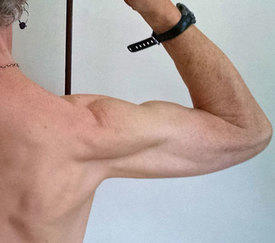kitchen scales do not measure "servings"

LNTUNNELL
Posts: 1 Member
I am new to this app but already have a serious questions. The app has only minimal units conversion features. There are some - but those few are highly inadequate. If one is logging a food entry, it should be possible to enter the food weight in grams (for ex) and have the data base make the conversion between grams/cups, liters/fluid ounces, etc.
Without that essential feature, this app is of only limited value. I didn't expect to have to walk around with a calculator and units conversion table while trying to construct a healthy meal. Disappointing ---
Without that essential feature, this app is of only limited value. I didn't expect to have to walk around with a calculator and units conversion table while trying to construct a healthy meal. Disappointing ---
0
Replies
-
An app is not going to be able to reliably convert between volume measures (cups, liters) and weights (grams, ounces). There are only a few things for which such a conversion would be reasonably accurate: That's why its standard advice among users here to weigh food, rather than volume-measuring it, if a person wants to be more accurate.
The above is extra true for an app like MFP, where the food database entries are crowd-sourced, i.e., entered by regular MFP users like you and me. The only information that they have to rely on, when typing in entries, is the data on the food label. Most food labels (in the US) have the standard serving size in grams, plus some other measure - cups, counts, whatever. Most MFP users will only enter one of those.
Your most accurate option is to weigh foods in grams (more granular than ounces and tenths) and find MFP food database entries that have grams in the serving size drop-down list, or create your own. That's what I do, and it's quite achievable. I'd say easy, but ease is subjective.
Mathematical wizardry is not required - if it were, I'd still be obese. I won't say I never use a calculator when logging, but it's rare, and not necessarily for the reasons you're talking about. For sure I don't use conversion tables!
The measurements issue is as good a reason as any to quit the app, I guess. There are other apps. But this one works fine, IMO.
6 -
I use grams and ounces.. since I go back and forth between Europe and the states - my trusty little scale from Rome is in grams. Something I didn’t grow up with.
A good rule of thumb I’ve found is 100 grams equal 3.5oz. I use that as my personal guide. (If that’s helpful)
I’ve found that grams over time have been easier to measure personally. Agree that it’s also more accurate to have weight than volume measuring. (Ie cups)
Unsure about the app converting things as I do it myself.1 -
Just do grams and remember the 3.5 ounce conversation. You can base everything off of that.
For liquids cups or fluid ounces are generally used.0 -
If I can figure it out, anyone can figure it out. I come from the generation of vociferously, militantly imperial measurements.
And after using metric for a while, I much prefer it for cooking and especially baking.
It’s so much more accurate. My old “cups” were waaaaaay more by volume than by weight, even when I called myself sifting flour. Ditto for tea and tablespoons, peanut butter being the classic example given here. A “tablespoon” of peanut butter is typically 25-40% more for most people by volume than by weight. That’s a considerable calorie difference if you’re counting.2 -
springlering62 wrote: »If I can figure it out, anyone can figure it out. I come from the generation of vociferously, militantly imperial measurements.
And after using metric for a while, I much prefer it for cooking and especially baking.
It’s so much more accurate. My old “cups” were waaaaaay more by volume than by weight, even when I called myself sifting flour. Ditto for tea and tablespoons, peanut butter being the classic example given here. A “tablespoon” of peanut butter is typically 25-40% more for most people by volume than by weight. That’s a considerable calorie difference if you’re counting.
Why we use scales.....
2 -
I've been using this app for several years and never had a need to do conversions. Most nutritional labels have the information you need and the app has the measurements that are easy to switch between. I typically use metric but will use imperial if it makes more sense for what I am entering. Nowadays I have a scale that will cover both. I use the app and the website. Great tool and great content!0
Categories
- All Categories
- 1.4M Health, Wellness and Goals
- 396.9K Introduce Yourself
- 44.2K Getting Started
- 260.9K Health and Weight Loss
- 176.3K Food and Nutrition
- 47.6K Recipes
- 232.8K Fitness and Exercise
- 454 Sleep, Mindfulness and Overall Wellness
- 6.5K Goal: Maintaining Weight
- 8.7K Goal: Gaining Weight and Body Building
- 153.3K Motivation and Support
- 8.3K Challenges
- 1.3K Debate Club
- 96.5K Chit-Chat
- 2.6K Fun and Games
- 4.5K MyFitnessPal Information
- 16 News and Announcements
- 18 MyFitnessPal Academy
- 1.4K Feature Suggestions and Ideas
- 3.1K MyFitnessPal Tech Support Questions




